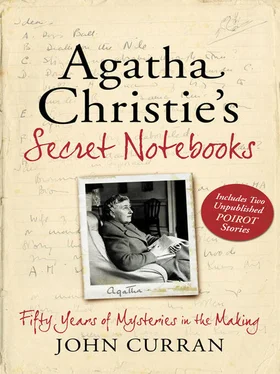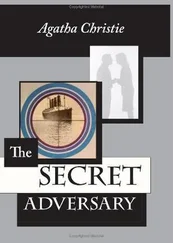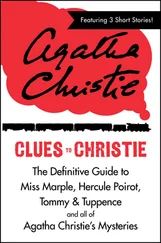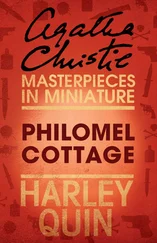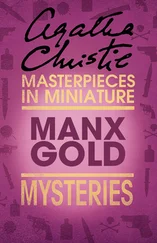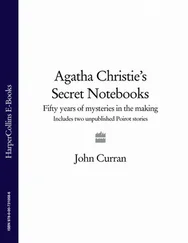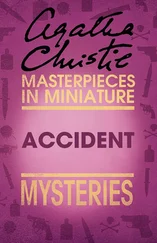The Bravo idea—would entail woman (widow) having affair with a doctor. She gives up liaison—he goes back to wife—she marries again
Finally, in Notebook 2, and notes for A Caribbean Mystery, some unused dialogue between Miss Marple and Major Palgrave, who is discussing his own story of a murderer he knew, lists four murderers from high-profile British murder cases:
No, No—it’s a pattern all right—Smith—Armstrong—Buck—Haig[h]—chap gets away with the first one and thinks he’s OK because he’s so clever
Joseph Smith, who drowned three ‘wives’, is the infamous ‘Brides in the Bath’ murderer who was hanged in August 1915. Major Herbert Rowse Armstrong was convicted in May 1922 for the murder of his wife although his original arrest was for the attempted murder of a professional rival. In September 1935 Dr Buck Ruxton murdered his wife and housemaid and dismembered the bodies; his conviction owed much to the groundbreaking forensic evidence. John Haigh, the acid-bath murderer, was convicted for the murder of six people and hanged in 1949.
6
The Girl in the Train: Murder Aboard
’Trust the train, Mademoiselle, for it is le bon Dieu who drives it’
The Mystery of the Blue Train, Chapter 23
SOLUTIONS REVEALED
Death in the Clouds • ‘Death on the Nile’ (short story) • Four-Fifty from Paddington • ‘Problem at Sea’
Modes of transport provided an attractive setting for Christie throughout her career. As early as The Secret Adversary the sinking of the Lusitania is the starting point of a complicated plot and two years later, in 1924, The Man in the Brown Suit is set largely on a ship. Some of her most famous titles are set aboard modes of transport—trains (Murder on the Orient Express ), ships ( Death on the Nile ) and planes ( Death in the Clouds ). The advantages with this type of setting are obvious: it provides a credible means of isolating suspects, it eliminates Scotland Yard and its technical know-how which could, in some cases, short-circuit the plot, and, in the case of Agatha Christie, it also puts to good use her personal experience. They also provide variety as a background, which, at the time, tended to revolve around country houses, offices and villages.
‘Death on the Nile’ (short story) July 1933
Aboard SS Fayoum Lady Grayle approaches Parker Pyne with a story of being poisoned by her husband. But is it just a story?
The notes for ‘Death on the Nile’ are contained in Notebook 63:
Wife confides to P (…or clergyman)
That she thinks her husband is poisoning her. She has money—apparently duel between husband and P—really husband is victim—wife is dupe—young man paying attention to niece is engineering it all—making love to auntie
The death scene in this short story has strong echoes of The Mysterious Affair at Styles and the overall plot has distinct similarities with ‘The Cornish Mystery’. The resemblances are so strong that this extract could indicate ‘The Cornish Mystery’. But the wife in ‘Death on the Nile’ has money whereas Mrs Pengelly, from the former, has not, so I believe that this is a sketch for the exotic version of the plot.
One notable revelation from the above extract was that Christie intended the story to involve Hercule Poirot (‘P. P.’ was her shorthand for Parker Pyne). In fact it was published as a Parker Pyne story; the idea was abandoned probably because Poirot had appeared in ‘The Cornish Mystery’ almost ten years earlier.
And two further pages of notes in Notebook 63 also reveal that Christie considered a dramatisation of the story:
Play PP version Death on the Nile
Lady Grayle—hard boiled—45
Sir George—50 good fellow—sportsman
Miss McNaughton—hospital nurse
Pam—lovely, nice
Michael—Sir G’s secretary
Dr. Crowthorne
Act II
She is poisoned—Miss M thinks it is Sir G—Doctor takes charge—strychnine found on Sir G—Miss M loses her head
Act III
Young people—Pam says Miss M did it—puts it up to doctor—he gets to work on her—Michael and Doctor
These notes follow the story closely, with no indication of the elaboration which would have been necessary for a ten-page short story. The reason for this may be deduced from the surrounding pages of the Notebook, where Christie experimented with other possible dramatic scenarios. On either side of this sketch there are similar brief outlines for stage adaptations (none of which were pursued) of Three Act Tragedy, ‘Triangle at Rhodes’ and ‘The House at Shiraz’, as well as an original, Command Performance. And earlier, and later, in the same Notebook there are detailed notes for the dramatisation of the novel Death on the Nile. Interestingly, with the exception of Three Act Tragedy, all of the titles share a foreign setting.
Death in the Clouds 1 July 1935
The mysterious and silent death of Madame Giselle high over the English Channel on a flight from Paris challenges Hercule Poirot—especially as he is a suspect. His investigation involves a visit to Paris, a blowpipe, a detective novelist and a wasp.
All of the notes for this title are included in Notebook 66 and comprise 30 pages with some fascinating diagrams. The notes follow fairly closely the plan of the novel, although there are some minor deviations mentioned below. Oddly, an allimportant list of the passengers’ possessions, which contains the main clue in the novel and which first draws Poirot’s attention to the killer, is not included in the notes.
The first page succinctly states the plot:
Aeroplane Murder—A special knife with thin pointed blade. Man gets up—goes into lavatory (blue pullover) comes back in white coat—darting like a steward—leans over talks about menu card stabs man—gives low sneeze at same time—goes back—returns in blue pullover and sits down again
From the beginning of the notes the killer is a man and, perhaps surprisingly, even the detail of the blue pullover he wears is retained. The idea of a low sneeze (an echo of The Murder at the Vicarage ) was, however, discarded and the victim changed to a woman.
In later pages the plot is further elaborated:
Chapter II
The steward—discovers the body—asks for doctor. B[ryant] comes
HP at his elbow—the ways—the Duponts suggest it—Mr Ryder agrees—mark on neck—P picks up thorn—Mr Clancy—blowpipe—arrow poison.
Arrival at Croydon—everyone kept in first car—Inspector—in plain clothes—another Inspector—Japp—
Why, it’s Mr Hercule Poirot—Or asks stewards who he is—they say they know him by sight etc.
Some pages earlier the idea of a blowpipe or an arrow as a murder weapon was considered. But, with typical Christie ingenuity, they were both to be used as a weapon for stabbing:
Stabbed by an arrow " by dart (poison) from blow pipe
This appears as Idea C on a list of plot ideas. Idea H on the same list is ‘Aeroplane murder’. When she settled down to plotting Death in the Clouds Christie incorporated the blowpipe dart idea, while the arrow idea was used many years later in ‘Greenshaw’s Folly’. In Mrs McGinty’s Dead, Mrs Oliver complains bitterly about pedantic readers who write to her to point out mistakes in her books. She instances the blowpipe she used in her novel The Cat it was who Died, ‘where I made a blow-pipe a foot long and it’s really six feet’ (Chapter 12). This sounds very like a rueful Agatha Christie!
Читать дальше
Конец ознакомительного отрывка
Купить книгу
